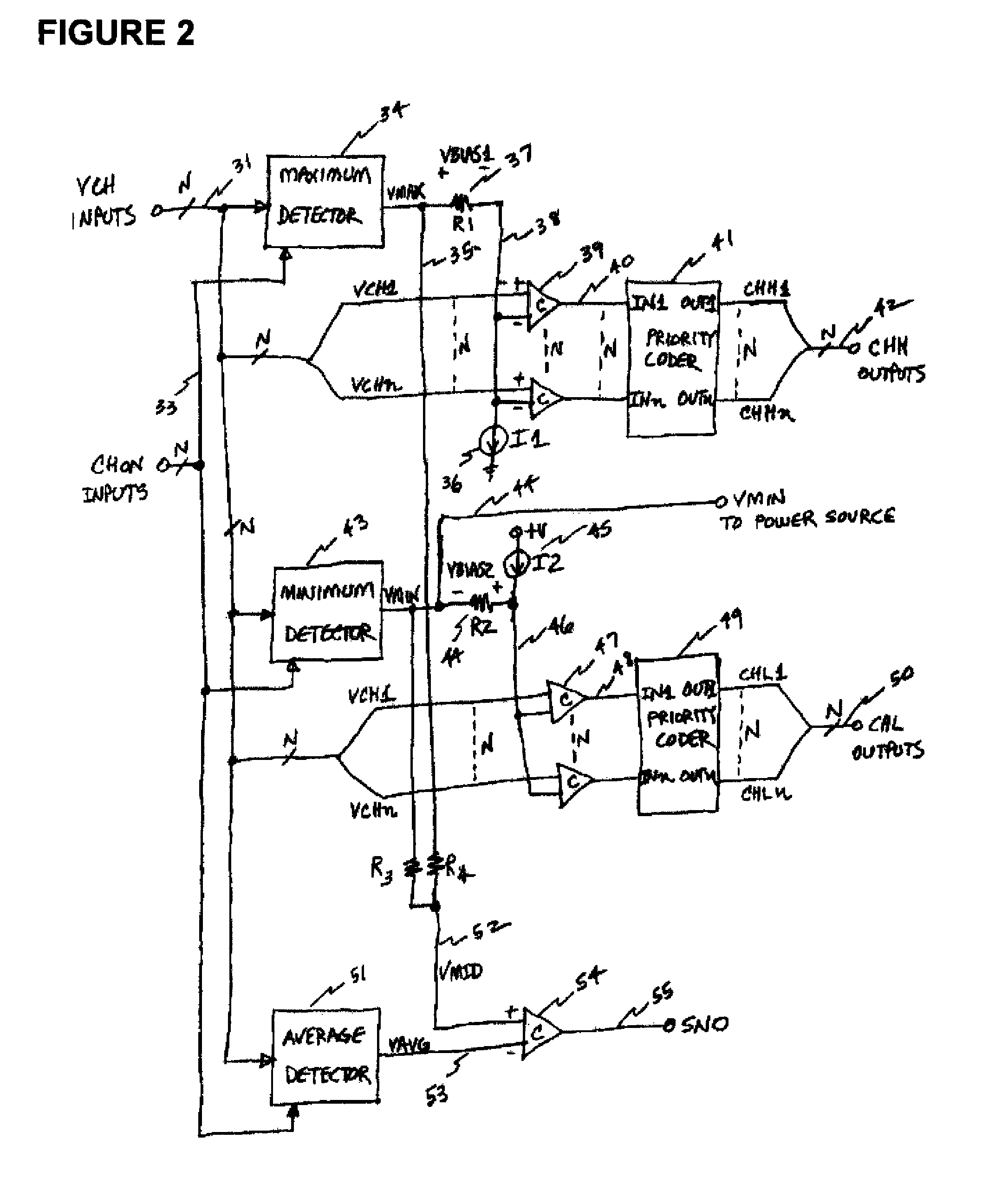Circuit for detection and control of LED string operation
a technology for led strings and circuits, applied in the direction of discharge tubes/lamp details, electric discharge lamps, discharge tubes/lamp details, etc., can solve the problems of reducing the operating life of a battery power source, excessive device heating, and increasing the power dissipation in the current sink of all other channels, so as to increase the value of increase the operating voltage, and increase the effect of the value of the vch for all other channels
- Summary
- Abstract
- Description
- Claims
- Application Information
AI Technical Summary
Benefits of technology
Problems solved by technology
Method used
Image
Examples
Embodiment Construction
[0025]Operation of the voltage detector in FIG. 2 begins with the channel voltage inputs VCH on wire group 31, corresponding to wires 7 through 9 in FIG. 1. These voltages go into a maximum detector 34, together with the CHON signals 33. The maximum detector determines the voltage value of the channel with the largest voltage VCH, and which is indicated as active by the associated channel on signal CHON. If a particular channel has its CHON signal off or inactive, then the associated VCH signal will not be used in determining the value of the maximum voltage output VMAX on wire 35.
[0026]FIG. 3 shows a typical means for making the maximum voltage detector 34 of FIG. 2. There are many ways known in the state of the art for making a circuit which is capable of selecting and outputting the largest of a set of input voltages. This figure shows one method which has been used to make the maximum detector. Operation begins with the input signal set consisting of N wires carrying signals VCH...
PUM
 Login to View More
Login to View More Abstract
Description
Claims
Application Information
 Login to View More
Login to View More - R&D
- Intellectual Property
- Life Sciences
- Materials
- Tech Scout
- Unparalleled Data Quality
- Higher Quality Content
- 60% Fewer Hallucinations
Browse by: Latest US Patents, China's latest patents, Technical Efficacy Thesaurus, Application Domain, Technology Topic, Popular Technical Reports.
© 2025 PatSnap. All rights reserved.Legal|Privacy policy|Modern Slavery Act Transparency Statement|Sitemap|About US| Contact US: help@patsnap.com



